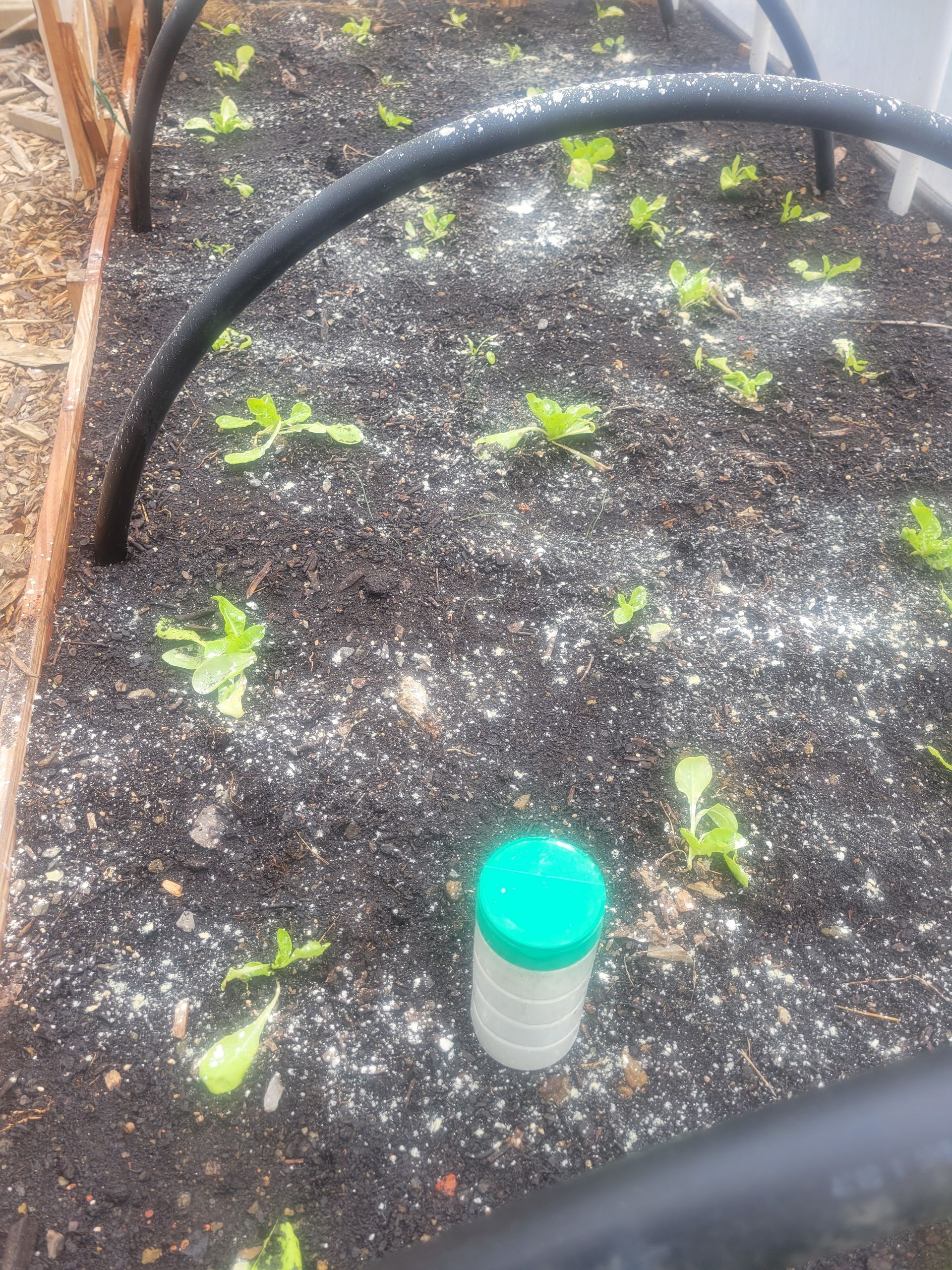Roundup is Making Us Sick
The world looked very different in the 1980’s, the decade I spent in medical school and family practice residency. Even though my job was mainly with the ill, people in general then seemed so much healthier than today. Back then, most cancers and all Alzheimer’s disease, autism and auto-immune diseases were rare. Why have they become so prevalent in the last three decades? For the last few years I have been looking through research to find answers. What I keep bumping into is the link between the introduction of Roundup and the increase in illness.
It’s not only physicians of my vintage that are alarmed at the rapid increase in previously-rare diseases. Veterinarians are witnessing a surge in livestock infertility and miscarriages. Dogs are getting cancers at an unprecedented rate. Plant pathologists tell of previously confined plant diseases, like bacterial wilt and fusarium, that are now rapidly spreading across the country. Although there are many poisons in our environment today, when we understand the history of Roundup and how it works, it becomes clearer why it’s a major factor in making us sick. We can then use this knowledge to keep ourselves and our families healthy.
Roundup’s history: Roundup’s active ingredient, glyphosate, was patented as a “descaling agent” in the 1960’s by Stauffer Chemical Company. Its purpose was to clean industrial pipes and boilers by binding, or “chelating” residual minerals. In areas where the used-glyphosate was discarded, plants died. Monsanto Corporation quickly saw its herbicide potential and bought glyphosate for herbicide use in 1969.
The FDA and USDA required no independent safety studies before allowing glyphosate on the market. Monsanto’s convincing argument was that humans don’t have the chemical pathway that glyphosate interrupts in plants and bacteria. Therefore, in 1974, the sale of glyphosate began as “Roundup.” It was marketed to both farmers and homeowners as a weed-killer.
In addition to the mineral-binding component, glyphosate, Roundup also contains “adjuvants” like surfactant. A surfactant breaks the surface tension of water and allows Roundup to enter all parts of a plant. As you will see, surfactant also has a major role in making us sick.
Roundup’s use as a herbicide was limited at first because it couldn’t be used directly on crops without killing them. When Monsanto developed glyphosate-resistant soybeans and corn in 1996, the use of Roundup soared. This was also the beginning of previously rare diseases becoming common.
Crops that are genetically engineered to be glyphosate-resistant have come to be known as GE (genetically engineered) or GMO (genetically modified organisms). Most GE crops were developed to be used with Roundup and are called “Roundup Ready.” When these crops are sprayed with Roundup, they don’t die. However, Roundup does become “systemic,” or everywhere in the plant--including in what we eat. It’s now believed that GE crops are not harmful in themselves. Research shows that it is the Roundup in the GE crops that make us ill.
Roundup is everywhere: There are four main reasons there has been such a rapid increase in the amount of Roundup used since 1996: “Roundup Ready” soybeans and corn grew to become almost 100% of the United States’ market by 2014. Secondly, weeds rapidly gained resistance to Roundup; the first resistant weeds were reported in the late 1990’s. To counteract this resistance, the amount of Roundup used in each field has doubled since 1996. Thirdly, the number of GE crops has grown to include sugar beets, canola and potatoes in addition to the original soybeans and corn.
Finally, the use of Roundup is no longer limited to GE foods. It is now used extensively as a pre-harvest desiccant to “dry down” crops. Non-GE crops like wheat, oats, barley, and sugar cane are sprayed with Roundup about a week before harvest so their foliage will be dry and easier to harvest with a combine.
Monsanto originally told the Food and Drug Administration that Roundup did not stay in the soil or the crops. It’s become clear that this is not true; high residuals have been found in the soil and then in waterways after it rains. It also resides in the entire plant and grains that are harvested and we ingest. Because Roundup is in food and water, it’s should not be a surprise that it is found in human urine, breast milk, central nervous system and bone marrow. Urban dwellers are as vulnerable as their rural counterparts in this regard.
If Monsanto found it so easy to convince our government that Roundup couldn’t hurt humans or other mammals, then why should we be concerned? To answer that, let’s look at what is now known about what happens to our bodies when our food and water is contaminated with Roundup.
Roundup makes our food less nutritious: Besides pleasure, the main reason we eat food is for its caloric and mineral content. As we know from its history, Roundup’s main ingredient, glyphosate, chemically binds to minerals and makes them inactive. When it binds the minerals in soil, these nutrients can’t become part of the plants which are our food. Roundup’s success at binding minerals was apparent when the USDA decreased the weight of a bushel of corn by two pounds since the use of Roundup began. That’s two pounds of minerals lost per bushel.
Fewer minerals in plants mean fewer minerals for our bodies. We’re familiar with calcium and phosphate for our bone structure, and potassium to keep our hearts beating. But our bodies also need a trace amount of other minerals, like manganese, iron, copper, zinc, magnesium, and selenium to serve as enzymes and co-enzymes for the hundreds of chemical reactions in our bodies. When Roundup is used on crops, these minerals stay in the soil instead of becoming part of our food.
A second way Roundup makes our food less nutritious is by killing the soil’s bacteria. These bacteria are an essential part of the soil-food web that delivers the minerals from the soil into plants. In 2010, Monsanto patented glyphosate as an antibiotic—and antibiotics kill bacteria. Glyphosate could never be marketed as an antibiotic because it only kills “good” bacteria and not the “bad.” But glyphosate’s role as an antibiotic continues in the soil, leaving our food with even less nutrition.
Besides reducing food’s nutritional value, Roundup has many direct effects on our bodies. When reading through published research, I felt a bit overwhelmed by these many mechanisms, and so gathered them together in the following categories:
Roundup is found throughout the body: Roundup’s harmful effects in the soil also occur in the human body when we eat plants and animal products that contain Roundup. Roundup has a free pass to go throughout the body because surfactant allows glyphosate to bypass the liver—the major organ that clears poisons out of the body. That is why Roundup has been found throughout the human body and has such wide-spread detrimental effects.
Roundup binds minerals in our body: Not only are there fewer minerals in the food we eat, but when Roundup binds the minerals in our bodies, these minerals can’t perform their myriad of functions. The body becomes unable to clear toxins, repair damaged DNA or even generate energy.
Roundup kills the bacteria in our large intestines: The last five feet of our intestines is known as the large intestines, or colon. It is here that the vast majority of bacteria are found in the intestines—tens-of-trillions, in fact. Back in the 1980’s our knowledge of these bacteria was confined to their essential role in digesting food. We also learned that using too many antibiotics, which only happened in the hospital setting, caused the large intestines to be overrun with the bad bacteria, C. difficile.
Today, people who haven’t been hospitalized or put on any prescription antibiotics are getting this same dangerous and uncomfortable bacterial infection. Now that Roundup is incorporated in most processed foods, the majority of Americans are eating an antibiotic daily.
Another consequence of ingesting daily antibiotics is the surge in gluten intolerance. A more severe form is Celiac disease which has gone from being extremely rare to now being found in five percent of our population. The medical world tells those that suffer from these uncomfortable diseases that they should avoid wheat—but wheat hasn’t undergone basic changes. Wheat that contains Roundup, from when it was dried before harvest, is the difference.
The known consequences of killing these bacteria got even worse when scientists realized intestinal bacteria play many essential roles outside the large intestines. For example, ninety percent of serotonin, a chemical that is responsible for our feeling of well-being, is manufactured by bacteria in the intestines. Killing these bacteria can result in a depressed mood for us as well as big profits for pharmaceutical companies that sell serotonin as an antidepressant.
Glyphosate inserts itself in our body’s proteins: One of the more frightening aspects of having Roundup in our bodies was only recently discovered. In 2016, it was shown that the main ingredient of Roundup, glyphosate, is mistaken by the body for the small amino acid, glycine. Proteins are able to perform their unique roles because they are made up of amino acids linked together in specific order and size. Glyphosate is larger than glycine and therefore prevents proteins from folding into their normal shapes. When they lose this ability, these proteins can’t perform their required functions.
The wide-spread implication of damaged proteins is almost too much to imagine. Some proteins are part of the enzymes in our bodies that speed up all chemical reactions. Other proteins form hormones like insulin that regulate blood sugar. Proteins also serve to transport other substances such as hemoglobin that carries oxygen. It’s no wonder that scientists conclude that most diseases that have soared during the last three decades can be linked to Roundup’s ability to damage proteins. Let’s look at some of these diseases now.
It seems evident that having Roundup throughout our bodies would result in disease as it binds minerals, kills good bacteria and distorts proteins. The increase in the following diseases since the 1970’s correlates with the amount of Roundup in the environment and in our bodies:
Autism and Alzheimer’s have reached epidemic proportions: It’s frightening that autism and Alzheimer’s, that weren’t even in the medical textbooks in the 1980’s, have become household terms. Autism’s incidence has increased from two in 10,000 in the 1970’s to currently being 59 in 10,000 according to the Centers of Disease Control (CDC). Alzheimer’s disease was defined as “a rare, pre-senile dementia.” It is now more common than vascular disease as the cause of dementia. Different types of studies—laboratory models, correlation studies and biochemical models—strongly link both diseases to Roundup.
Cancer is now wide-spread: The incidence of cancer has also taken an astronomical leap from 1/100 in the 1970’s to one-of-two people today. Although I worked with an oncologist for three years in the 1980’s, I never saw a case of Non-Hodgkin’s lymphoma, pancreatic cancer or lung cancer in a non-smoker. These cancers are now so common that most of us know of someone who’s had them. Since sugar cane workers in Central America have been exposed to Roundup, they have been dying in their 40’s of renal tubular carcinoma—a disease that was not previously present.
Based on both Roundup’s link to cancer and many international studies, the World Health Organization declared glyphosate a “probable carcinogen” in March of 2016. Shortly after, four farmers filed a lawsuit against Monsanto saying that their exposure to Roundup gave them Non-Hodgkin’s lymphoma. In August of 2018, the Superior Court of California awarded a large settlement to a former school district groundskeeper who stated his Non-Hodgkin lymphoma was caused by prolonged exposure to Roundup. Although Monsanto is contesting this, many other lawsuits have been filed.
The list of diseases continues: Besides autism, Alzheimer’s and cancers, Roundup’s ability to kill bacteria, bind minerals and distort proteins is linked to diseases as varied diabetes, obesity, asthma, amyotrophic lateral sclerosis (ALS), Parkinson’s disease, lupus, neural tube defects and infertility.
When we read about how pervasive Roundup is and how it damages our health, it’s easy to feel overwhelmed. When things feel too big for me to handle, a dear friend’s advice comes to me—just keep chipping away at it. Protecting ourselves and our families provides the motivation we’ll need to make continual small changes in what we eat. Here are some suggestions that have helped me:
Eat organic foods when possible: The organic label is the only label that guarantees no herbicides or GE ingredients. That means no Roundup in plants via GE crops or dried-down plants. Meats, dairy and eggs that are “certified organic” cannot come from animals fed with any food containing Roundup. When you know local farmers who grow food sustainably and without herbicides, you’ll want to support them even if they’re not officially “organic.”
Avoid all GE foods: Even if GE foods haven’t been found to be harmful in themselves, all GE foods are “Roundup Ready” and may contain Roundup. Unlike 64 other countries in the world, the United States does not require GE labeling on its food. Congress passed a bill in 2016 which required GE labeling, but since then the USDA has only suggested bar labels that can be read with smart phones or a deceptively smiling sunflower with a “BE” (“bioengineered’) on it. “Bioengineered” is not a common term for GE food. This attempt at deception means we consumers need to keep aware.GE foods include soy, corn, canola, sorghum, sugar beets and potatoes.
Avoid non-GE food that may be dried down with Roundup. If not organic, it’s best to avoid all wheat, oats, canola, flax, peas, lentils, safflower, barley, rice, sunflower seeds and cane sugar.
Avoid processed foods: Over 90% of the food we Americans buy is processed, so this is indeed a tall order. But because flour and sugar may contain Roundup, we might begin by buying these ingredients as organic. I appreciate that even our rural grocery store now carries organic brands of both flour and sugar and many other ingredients. If bread and cookies are part of the family’s fare, we can bake our own! Processed food is convenient, but it is not convenient to be ill.
Grow what food we can: Michael Pollan has been encouraging us for years to convert our lawns into gardens—bit by bit. As urban, suburban and country folks gain knowledge about the contents of corporate food, it may now seem more feasible to begin or to continue growing our own food. Those who haven’t begun may start with some tomatoes and basil plants around the house or in patio containers. Adding a raised bed for vegetables in the lawn may be the next step. When increasing the size of your garden is taken in annual increments, your knowledge and pleasure will grow along with the amount of home-grown food on your dinner table.
Use vinegar for weed control: Here's a handy weed control method that, unlike Roundup, does not promote weed resistance, does not contaminate our food or environment and works great! Vinegar can be found in hardware stores that is 30%. I add just a bit of liquid soap to the vinegar and spray it directly on weeds and grass that I don't want encroaching on the garden. It works within hours!
The corporate food system gradually elbowed its way into our kitchens by promising to make out housework easier. Perhaps we didn’t see how processed food would take over our dinner tables or perhaps we trusted corporations to give our health priority over their profits. When we read about how damaging something like Roundup is to our health, we can feel either victimized or empowered. I believe I alternate between these feelings depending on my mood. But in gathering and sharing this information, I’m hoping we will all be better able to take back control of keeping ourselves healthy.
Some Resources for Roundup/Glyphosate Information
Studies from scientific journals (results online):
- The Lancet (British medical journal) prints scientific research from around the world including articles on human and rat toxicity, cancer-causing effects, pneumonitis, effects on red blood cells, toxicity on genes, surfactant’s toxicity on lungs
- Journal of Occupational Medicine and Toxicology/glyphosate
- International Journal of Toxicology: “Glyphosate-based herbicides are toxic and endocrine disruptors in human cell lines”.
(Gasnier, C)
- Interdisciplinary Toxicology: “Glyphosate, pathways to modern diseases II: Celiac Sprue and gluten intolerance” (Samsel A)
- The Lancet Oncology: WHO’s classification of glyphosate as “group 2A probable carcinogen to humans.”
Scientists or online sites who publish and/or summarize studies for the public:
- Stephanie Sineff, PhD from MIT: papers, talks and PowerPoint relating glyphosate to autism.
- Dr. Nancy Swanson, epidemiologist, studies relating increase in chronic disease to glyphosate’s effect in immune system, gut bacteria, DNA
- Beyondpesticides.org/glyphosate
- Dr. Don Huber’s (plant pathologist) Acre’s talk: The Shocking New Science Behind GMO’s and Herbicides.
- Art Dunham, DVM, links glyphosate’s chelating ability and antibiotic role to increased problems in animals and humans
- Dr. Gilles-Eric Seralini (French) professor of microbiology publishing laboratory studies showing Roundup toxic to cells and an endocrine disruptor
- Rodale Institute: online articles periodically summarize research on Roundup
- Thierry Vrain, PhD. Canadian molecular biologist: his online talks good summary of available studies on GMO’s and Roundup
- Elaine McFadden, MPH, RD: Monsanto convinced EPA to label “secret” early studies linking glyphosate to cancer.
- Anthony Samsel, PhD and Sineff: “Glyphosate, pathways to modern diseases II: Celiac sprue and gluten intolerance”
- Dr Monika Krueger (Danish), Study published in GMO Evidence:“Glyphosate is Toxic to Dairy Cows”
- Samsel & Sineff in Surgical, Neurological International: “Glyphosate, pathways to modern diseases III: Manganese, neurological diseases, and associated pathologies."
- Lawsuits involving Roundup
- https://www.consumernotice.org/legal/roundup-lawsuits/


Mary Lou
mlgrowinglocalfood@gmail.com

